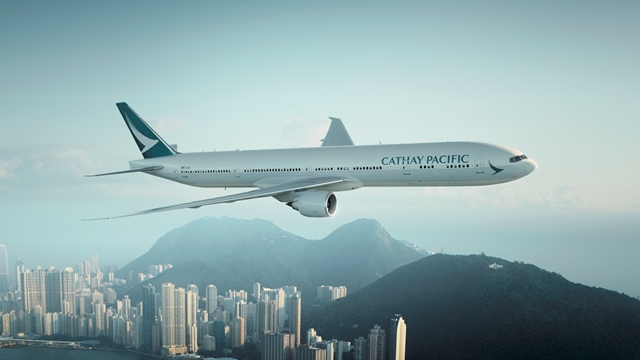 Hong Kong flag carrier Cathay Pacific expects its financial performance in the first half of 2020 to be significantly lower than in the same period in 2019 as it suffered a sharp decline in demand in the first month of the year and implements deeper capacity cuts as a result of the coronavirus (COVID-19) outbreak.
Hong Kong flag carrier Cathay Pacific expects its financial performance in the first half of 2020 to be significantly lower than in the same period in 2019 as it suffered a sharp decline in demand in the first month of the year and implements deeper capacity cuts as a result of the coronavirus (COVID-19) outbreak.
Cathay Pacific and Cathay Dragon carried a total of 3,010,012 passengers last month—a decrease of 3.8% compared to January 2019.
The two airlines carried 151,964 tonnes of cargo and mail last month, a decrease of 8.9% compared to the same month last year.
Cathay Pacific group’s chief customer and commercial officer Ronald Lam said: “This was the most challenging Chinese New Year period we have experienced. As the novel coronavirus outbreak in mainland China intensified towards the end of the holiday period, travel demand dropped substantially. With more governments worldwide having imposed travel restrictions on passengers from mainland China and in some cases Hong Kong, we are seeing continued cancellations of bookings.”
Lam said that in response to this development they have sharply reduced capacity across its global network.
“For February and March, we have now reduced our overall passenger flight capacity by approximately 40%, representing further reduction since our recent announcement. Passenger capacity reduction is also likely for April as we continue to monitor and match market demand. Meanwhile, we have kept our freighter capacity intact.”
Lam said overall passenger performance in January was slightly behind that of 2019. Inbound passenger traffic to Hong Kong was down 40% year-on-year, a slight improvement over the 46% declines seen in November and December.
He noted that “for the first time in the past few months we saw growth in our outbound traffic—1%—though this was largely due to the Chinese New Year holiday starting earlier this year. We remain heavily reliant on lower-yield transit traffic through Hong Kong, which grew by 7% versus the same period last year.”
“We started off 2020 fairly positively, seeing satisfactory passenger traffic volume through the first three weeks of the year. This was particularly evident with our long-haul routes, which showed improved load factors and yield over 2019,” he said.
“However, our performance deteriorated rapidly in the last week of January as the novel coronavirus situation became more severe, and it continues to weaken significantly. We saw significant cancellation of bookings within a short period of time.”
Meanwhile cargo demand was “reasonably solid” across the network for the first three weeks of January, with the airline’s mainland China point of sales particularly standing out, recording year-on-year tonnage growth.
By the last week of January, however, overall demand plummeted as manufacturing came to a halt in mainland China during the Chinese New Year holiday.
“The delay of the post-Chinese New Year resumption of manufacturing across mainland China has significantly affected both our Hong Kong and mainland China markets. However, demand elsewhere across our network remains buoyant, especially on trade lanes that have seen significant reductions in passenger capacity,” said Lam.
Looking ahead, he said: “The first half of 2020 was already expected to be extremely challenging financially. As a result of this additional significant drop in demand for flights and consequential capacity reduction caused by the novel coronavirus outbreak, the financial results for the first half of 2020 will be significantly down on the same period last year.”
Photo courtesy of Cathay Pacific





